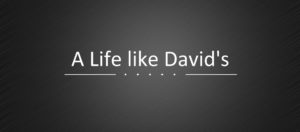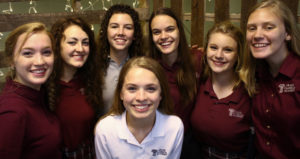Christian Classical Education at GCA
Christian Classical Education at GCA
by Cheryl Vandiver
Like all worthwhile endeavors, it is important to periodically review the fundamentals that motivate our actions and to remind ourselves of our purpose and direction. Here at GCA, we are endeavoring to provide a Christian classical education for our children. It is important for all involved in this task—including parents, teachers, board, staff, and students—to understand what it means to be both a Christian and classical school. When confusion or ambiguity exists regarding the purpose, misunderstandings often arise, and the work suffers from a lack of unified effort. Understanding what a commitment to a classical education involves will enable our community to face challenges because we understand the benefits of a classical education and are willing to make the effort to stay true to our purpose.
Because a classical education is unfamiliar to many of us, we must rethink basic assumptions about the purpose of education, methodologies in teaching and expectations about the results of education. The purpose of a classical education is to equip students to think, reason and actively participate in their world. Regardless of their profession, the student is to be able to discern the Christian nature of the entirety of life. This objective defies our culture’s standardized approach to education because it focuses on the development of the student rather than on the transfer of a particular body of knowledge. The result of a Christian classical education should be a person who can confidently recognize and assert the lordship of Christ in every particular of life. This is far more demanding than expecting a certain score on a standardized test to prepare for a particular profession.
Parents have to be willing to watch their child truly struggle to think and not just repeat answers given from a textbook. Teachers must constantly evaluate their methods and ensure they are demanding the students to develop mentally. “Classical education also reminds children that they are not self-sufficient, that they need their wiser elders to explain the world to them, that they must learn restraint and discipline before they earn the right to expression.” (Classical Education: The Movement Sweeping America, Veith, Gene Edward, 119). A classical education seeks to equip the student to think. It is not primarily about ensuring mastery of a set of objectives, but about ensuring mastery of the learning process itself. Dorothy Sayers explains eloquently in her classical education standard article, “The Lost Tools of Learning,”
I am concerned only with the proper training of the mind to encounter and deal with the formidable mass of undigested problems presented to it by the modern world. For the tools of learning are the same, in any and every subject; and the person who knows how to use them will, at any age, get the mastery of a new subject in half the time and with a quarter of the effort expended by the person who has not the tools at his command. To learn six subjects without remembering how they were learned does nothing to ease the approach to a seventh; to have learned and remembered the art of learning makes the approach to every subject an open door.
To aid in the development of a “thinking” person, the classical method relies on a time-tested pattern of learning development. When learning anything new, a person must 1. Memorize the structure or terms of the issue (the grammar of the information), 2. Organize and analyze the issue (the logic of the information), and finally, 3. Express the issue in your own words, which demonstrates mastery of the issue (the rhetoric of the information). Once these three tools have been applied, a person has truly learned the information. These three stages make up what is called the Trivium: Grammar, Logic and Rhetoric.
The Grammar Stage is generally from Kindergarten to 4th grades. In these grades, children are excellent at memorizing facts and love to repeat and mimic information. During the Grammar Stage, the children are learning the grammar (the building blocks) of how various disciplines are arranged.
The next stage is roughly from 5th-8th grade. In this stage, students begin to question why the facts are true. They want to explore the exceptions and are often eager to point out mistakes that adults make. This is an attempt to make the information their own and make sure it is true. This is the Logic Stage. It is important to teach the students to learn to ask the right questions and to find ways to answer their questions. During this stage, students are trying to formulate ways to organize all the data they have accumulated about their world.
The final stage is from the 9th-12th grades. This is called the Rhetorical Stage. In these years, the students are learning how to express themselves. By following the natural development of the mind, they have built a solid body of information, have made it their own through analysis, and are now ready to formulate their own ideas and opinions and learn how best to express these ideas to the world.
These three stages represent the basic pattern of learning. If the students have mastered these tools to learning, by practicing them in various subject matters, they will be prepared to learn anything new and be able to grasp its content, analyze it logically, and then be able to formulate an opinion. In this way, students are prepared for life in whatever occupation they find themselves. They are prepared to join in what Mortimer Adler describes as the “Great Conversation” of mankind and have something worth saying.
The classical educational approach is more than following these three stages of learning. It also involves a systematic building of facts and a systematic pattern of development that encourages discovery and equips the student to tackle new areas of interest. The classical approach also emphasizes the interrelatedness of all disciplines and shows the connectedness of music and math or history and art or art and math, etc. Rather than keeping subjects in distinct categories that fail to show their interrelatedness, the classical method encourages discovery of the wonderful way in which all disciplines are connected.
The overall purpose of a classical approach to education is to prepare a student to be a lifelong learner by equipping and training them to use the tools they will need to learn any subject. The goal is to have the student be able and willing to teach themselves, motivated by a love of learning.
While it is true that a classical education is WORK, we at GCA believe it is work that is well- worth the effort. It is not only worthwhile, it is vital to the survival of our students that we prepare them not to simply pass a standardized test, but to be able to think and reason as citizens in the world. This we feel can best be done as all of us work together to make GCA a Christian classical school. We will have succeeded in our task as the students grow into virtuous citizens who have been trained how to think and respond to the challenges their world will send them. We will have succeeded when they recognize and embrace the good, the noble, the wise, the true, and the beautiful. This goal is worthy of our endeavor and all the work it will take to keep this vision foremost in our school.
For more information on the Trivium, read Dorothy Sayers’ “The Lost Tools of Learning.”




